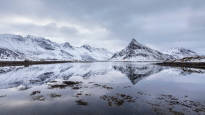The green transition requires minerals, which will dwindle in the coming decades. Solutions for renewable energy needs are therefore now being sought from the seabed. Many countries are planning deep sea drilling.
In this article, we gathered key questions related to sea mining.
1. What did Norway decide?
On January 9, Norway’s parliament, or the upper house, approved the government’s plan, where part of Norway’s seabed could be opened for deep-sea mining.
Norway’s conservative government justifies the decision by saying that Norway could promote the green transition with the help of minerals found on the seabed. Located mainly in the Arctic region, the area is almost the size of Finland. It covers an area of approximately 280,000 square kilometers. Each mining license application is processed separately.
At the beginning of 2023, the marine department of the Norwegian Ministry of Energy published a report according to which there are minerals such as copper, zinc and cobalt on the seabed.
The actual mining has not started yet. One of the license applicants is the Loke Minerals company.
Managing director Walter Sognnes says to in a telephone interview that the economic profitability and environmental effects of the operation are being investigated. According to him, excavations could possibly start in the early 2030s.
2. Which countries are on the move?
South Korea, Japan and the United States are tuning up mining operations, among others. The Pacific island nation of Nauru announced that it is seeking cooperation with the Canadian mining company The Metals Company. In addition to Nauru, for example, Norway and China can proceed with their plans independently, because deep-sea mining is part of the national legislation of these countries.
In addition to states, international mining companies pursue seabed minerals. The operation is regulated by a loose Convention on the Law of the Sea. The seabed is monitored by the international seabed agency ISA under the UN.
3. What can be found at the bottom of the sea?
In the mining area planned by Norway, there is cobalt, nickel, copper and possibly lithium at a maximum depth of four kilometers. For example, an estimated 38 million tons of copper could be found.
Multimetallic nodules containing critical minerals, possibly formed over millions of years, are found especially in the Clarion-Clipperton area in the North Pacific. Minerals can be distinguished from nodules. Rare metals such as cerium, lanthanum, neodymium, gadolinium and samarium are also obtained from the nodules.
In the depths, there are also metal-rich sand deposits, deposits near cracks in the seabed, i.e. smokers, and so-called upa ores, where for example platinum, gold and diamonds are hidden to be mined.
4. How are minerals mined?
In practice, minerals would be collected with the help of automated robotic collectors.
See in this animation how the collection could take place:
5. Why are excavations opposed?
The effects of deep-sea mining on the marine ecosystem are not yet known. The depths have been explored little, the effects of mining are even less known. The project has generated a heated debate in Norway.
Last year environmental organizations demand in their joint statement government to cancel the project, says the Norwegian broadcasting company NRK.
The Geological Survey of Norway, NGU, has also criticized mining plans.
The excavation process itself also raises questions. Seabed sediment rises from the bottom during collection and is transported to new areas. According to researchers, sediment clouds may bury or suffocate seabed organisms.
Watch the video for basic information about deep-sea mining:
6. What kind of resources are hidden at the bottom of the sea?
Mining is being stepped up because the seabed is estimated to have abundant mineral reserves.
The reason for the possible mineral rush can be seen in this graphic.
It is estimated that there is, for example, more than five times the amount of cobalt in the seas compared to the amount of cobalt ever mined from the soil.
The CEO of Loke Minerals company Walter Songnnes, Geological Survey special researcher Joonas Virtasalo, researcher Krittika Singh of the Arctic Center of the University of Lapland, professor of marine biology Geir Jonsson from the Norwegian University for Technology and Science and professor of marine biology Jørgen Berge from the Arctic University of Norway have been interviewed for the story.
Listen to the Everyday World Politics broadcast on the topic:
